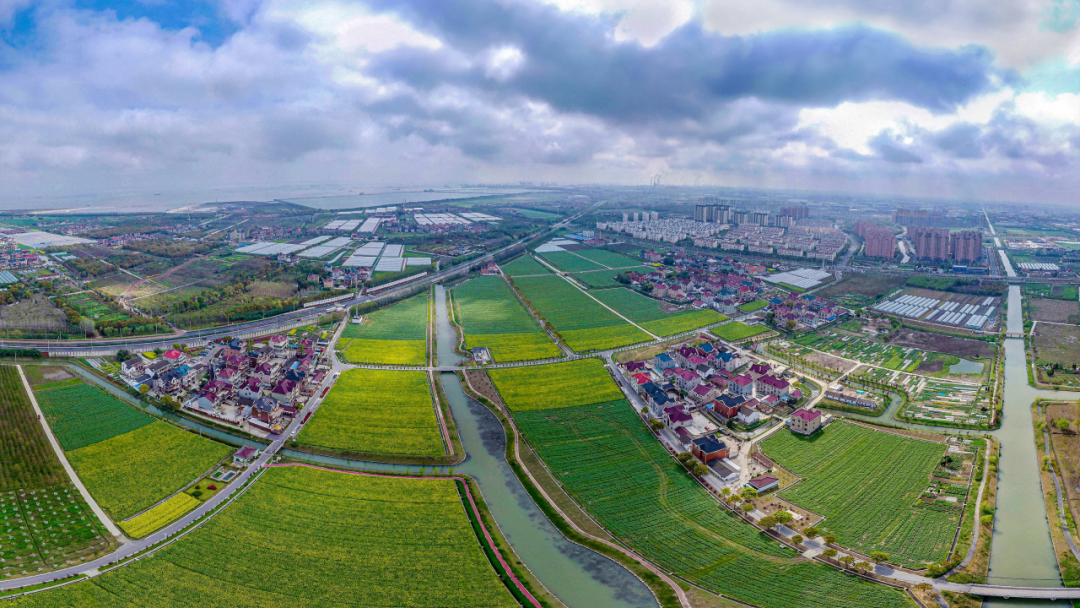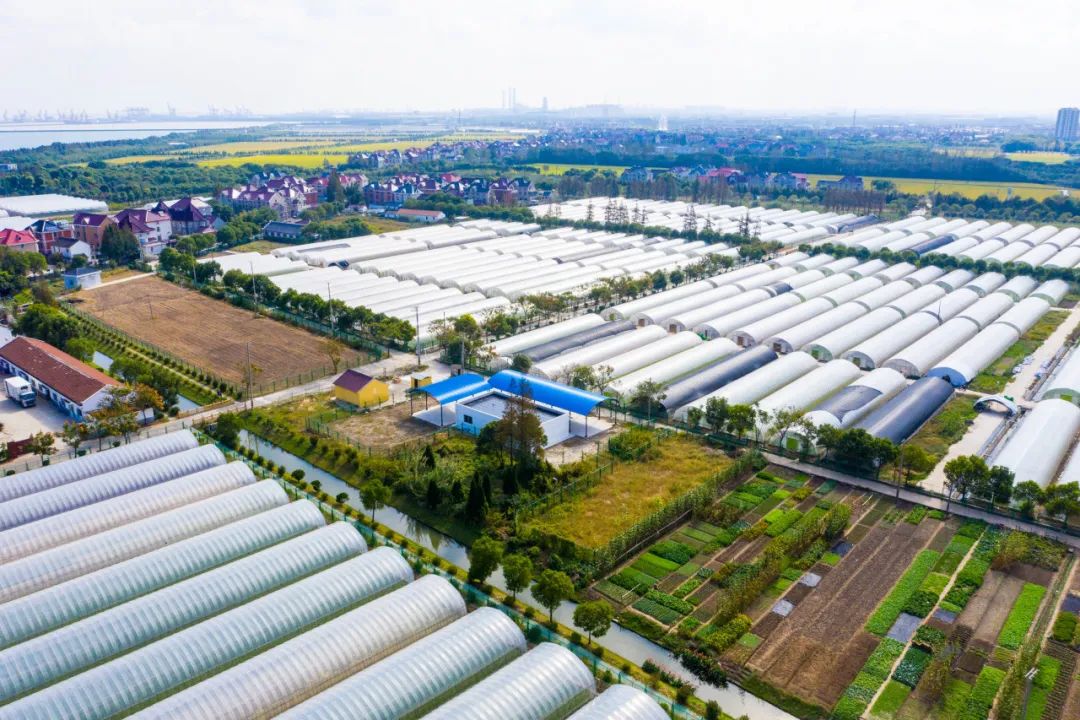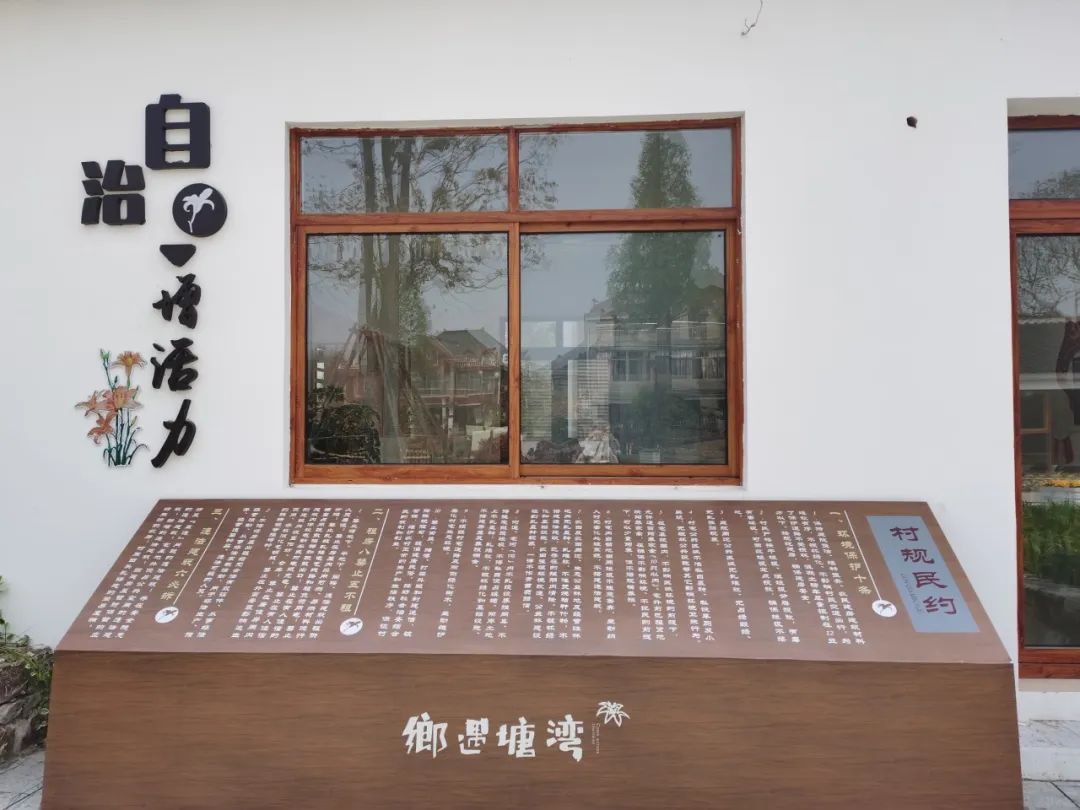Building Shanghai-style Countryside with Baoshan Characteristics that Features Both Aesthetic Appeal and Strong Capabilities
Giving full play to the advantages of resource element aggregation and building a harmonious and beautiful countryside with Baoshan characteristics.
Baoshan has the smallest agricultural scale in the city, and its rural area is the closest to the urban area. Agriculture and rural areas have distinct urban characteristics, with the aggregation of such elements as technology, talents, funds and resources. Currently, the countryside is undergoing transformation and development in sync with the district, focusing on the development of technological agriculture, green agriculture, provenance agriculture and contract farming to build a Shanghai-style countryside with Baoshan characteristics.

1. Shaping of the visibility of area-based construction. Area-based construction originates from the actual situation and summary of grassroots practical exploration in Baoshan's countryside. First of all, it involves understanding the natural characteristics of Baoshan's countryside. Based on the characteristics of small scale and compact layout of Baoshan's countryside, at the beginning of the construction of rural revitalization demonstration villages in 2019, Baoshan took the lead in proposing the concept of area-based construction of rural revitalization demonstration villages in the process of creation, clarified the overall construction plan of "one main axis and five areas" for rural construction, and included it in the 14th Five-year Plan for rural revitalization. Secondly, it involves implementing the construction plan continuously. Through five years of continuous planning and construction, demonstration areas have been established in the district, including the "five-village linkage" demonstration area in Luojing Town in the north, the "two-towns and eight-villages" demonstration area in Luodian and Yuepu in the central part, the rural demonstration area along the outer ring of Gucun Town in the south, and the "clover" (Yuanjing, Lianhe, and Luoxi) demonstration area under construction at the junction of Luodian Town and Jiading. In the process of area-based construction, Baoshan has adhered to coordinated style, industrial linkage, facility connection and resource sharing to avoid the limitations of single-village creation and waste caused by repetitive construction. At present, among the 103 administrative villages in Baoshan, there are 50 empty-shell villages with only the administrative system, 18 transitional villages with some rural houses, and 35 planned, reserved and protected villages; among them, 21 villages are recognized as municipal rural revitalization demonstration villages (municipal beautiful countryside demonstration villages), accounting for 60%.

2. Sustainable construction of industrial development. Expanding the existing industries and introducing leading industries from outside are the preconditions for the selection and creation of rural revitalization demonstration villages, focusing on the long-term sustainable development of the demonstration villages. On the one hand, a number of local leading enterprises have been developed by "expanding the existing ones". Tianping Village develops mushrooms and has become a village with a characteristic industry worth RMB 100 million in the country. Haixing Village develops lake crabs and has become a demonstration village of "one village with one product" in the country. Yongda Fungi and Hankang Tofu have become leading enterprises in the fields of edible fungi and soy products in the city. Newly introduced high-quality enterprises in such industries as bean sprouts (GOLDIOS) and dendrobium (Leihong Technology) have been localized in Baoshan. On the other hand, a number of leading agricultural, cultural and tourism enterprises have been introduced by "creating something out of nothing". The support orientation for agricultural industrialization has been adjusted at the district level and the upgrading and transformation of collective assets have been included in the scope of support under the district's "30 measures for sci-tech innovation", expanding from simply supporting agriculture to new business forms of the integrated development of agriculture, culture and tourism, supporting the revitalization of homesteads in demonstration villages and the renovation of old collective houses, giving full play to Baoshan's location advantage backed by the metropolis, and encouraging the renewal of rural industries. For example, Shenjiaqiao Village in Yuepu Town introduced the pet economy; Juyuanqiao Village developed the succulent plant industry; Yueshi Village built the rural sports park; Gucun Town, giving full play to the advantages of "park in the north and university in the south", expanded the complex business forms of rural office, flowers, cultural & creative industries, and sports. Luodian Town has utilized such elements as ancient towns, water towns, lake areas and countryside to create a rural cultural and creative block featuring pets, exhibitions and sales, native land and entertainment with Tianping Village and Yuanjing Village as nodes. A number of leading agricultural, cultural and tourism enterprises such as Yuanjie Sports (sports park), Kunshi Landscape (phalaenopsis), MAX-LIGHT (racing) and Dika (European-style furniture), as well as post-85s and post-90s young farm owners have settled in Baoshan. At present, Luojing Ecotourism Area, Yuepu Agriculture-Culture-Tourism Integrated Development Area, and Luodian Rural Slow Life Area have been established in the district.

3. Ongoing promotion of rural governance. On the one hand, national demonstrations have been carried out relying on Baoshan as a national pilot demonstration area for the construction of rural governance systems. The Rural Governance College was established to provide training for key personnel in rural governance, with one rural governance officer for each village. At present, three demonstration villages in the district have become national rural governance demonstration villages (Juyuanqiao Village, Tianping Village and Shenyang Village). On the basis of the creation of demonstration villages, Luojing Town has become a national rural governance demonstration town. On the other hand, eligible demonstration villages are guided to actively introduce socialized services and implement community-based management. Through the form of villagers' (representatives') meetings, management issues related to rural governance such as parking, garbage, public toilets and house renting are elevated to villagers' self-governance conventions and implemented within the community. This includes implementing the relatively closed management of rural areas, free parking with a fixed quota for each household, linking garbage disposal fees with the number of rental households, and other mechanisms that ensure equality of rights and obligations. The increased income from community-based management is used to support the construction and daily operation and maintenance of public facilities, guiding the formation of a rural governance pattern where "everyone enjoys village-level public resources and everyone fulfills village-level public management obligations". In the next step, towards the goal of taking the lead in basically achieving agricultural and rural modernization by 2030 in the city, Baoshan will prioritize key tasks such as building a complete agricultural industry chain, adjusting the rural industrial structure, developing the collective economy in a new way and constructing a harmonious and beautiful countryside, and focus on two leading projects. First, a representative of Shanghai's technological agriculture (Modern Facility Agriculture Baoshan Yueluo Area) will be built. In the central area of Baoshan's countryside, a new modern facility agricultural park covering more than 2,000 mu in Shanghai will be built. Relying on the scientific research advantages of the Chinese Academy of Agricultural Sciences and the energy advantages of Baosteel and power plants in Baoshan, and focusing on technological and low-carbon agriculture, a window will be built to showcase Shanghai's agricultural technology to the outside world. Second, a representative of Shanghai-style Jiangnan countryside will be built (Baoshan Yueluo Harmonious and Beautiful Countryside). Relying on the factor advantages of the market, technology, talents and funds gathered in the metropolis, pilot projects will be carried out to create a harmonious and beautiful countryside that features well-developed infrastructure, pleasant environment, enjoyable experience, and good village customs, and is suitable for living and business. Guidance will be given to the joint creation of three professionals (introducing urban planners, landscape architects and assessors as pairs in cooperation with Ruijin Second Road Subdistrict) and aesthetic education empowerment (in cooperation with the Academy of Fine Arts of Shanghai University, establishing the China Rural Aesthetic Education Alliance to send artists and designers to the countryside). By combining the above two leading projects, a spatial pattern of ecological countryside in the north, technological and low-carbon countryside in the middle, and headquarters countryside in the south will be formed, and a path will be explored to create rural revitalization demonstration villages in metropolitan suburbs characterized by concentrated contiguous areas, distinct industries and multiple participants.

宝山汇APP

上海宝山微信

上海宝山微博